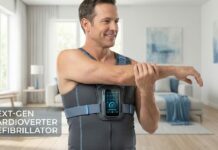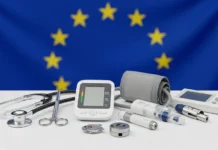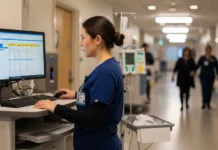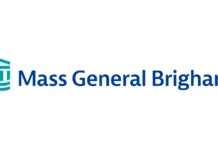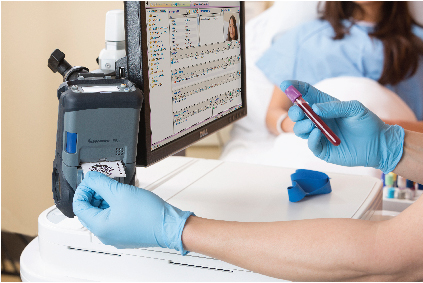FOCUS MORE OF YOUR VALUABLE TIME AND RESOURCES ON PATIENT CARE
A wheel chair costs about $150, but in a week, a hospital’s staff can spend up to $7,000 in clinical time just searching for one. Nearly 90% of all hospital patients will require an IV, but overstocking to compensate for lost or misplaced infusion pumps can cost the typical hospital $150,000 or more annually. A hospital bed runs about $1,200. What does it cost if each patient spends just one extra hour in a heavy resource use area like the emergency department or the ICU, waiting for that empty bed to be reported as available?
BUSINESS CHALLENGES:
Healthcare is a business unlike any other. First, patients are not typical consumers – they do not always decide when and where they will seek care, the type of care they will get, how much to pay for it or how urgently they need it. Yet cost of care is a serious concern to them. 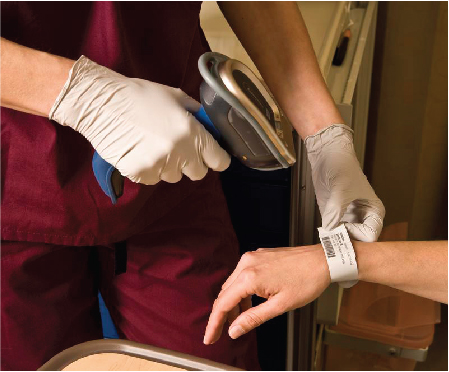
At the same time, you and your caregivers do not function as autonomously as a typical business. Legislators, regulators and payers all have an interest and often their policies affect both clinical and business decisions. The pressure, demand and challenges of controlling costs while delivering quality care will continue to accelerate.
And that means, for healthcare providers, efficiency is not merely good fiscal practice. It must be a critical component of their mission.
Managing Equipment
Most healthcare providers would agree that their operations could benefit from improved efficiency, especially in managing vast supplies of medical equipment. AMR Research estimates that between 10% and 20% of a typical hospital’s mobile assets are lost or stolen during their useful life. That’s at an average cost of nearly $3,000 per item.
Regularly scheduled maintenance according to manufacturers’ specifications is necessary to ensure medical devices are performing effectively. Yet according to experts, up to 75% of maintenance time is spent searching for the item. As often as not, when the item is found, it is in use or otherwise unavailable for servicing. It’s no wonder that many hospitals are having a difficult time complying with government and manufacturer regulations on equipment maintenance.
 Managing Inventory
Managing Inventory
Inefficiency also affects inventory management. To protect against running short in an emergency, the average hospital “over spares” many consumables such as dressings and instruments by approximately 30%, tying up capital that could be put to better use elsewhere. In addition, about 40% of a typical hospital’s pharmacy spend is used to purchase rush order, non-contract items. If more of those purchases could be anticipated and routinized, significant savings would be possible.
Tracking Patients
Despite the many carefully designed plans for efficiently tracking and identifying patients, mistakes still happen. Researchers say about 100 babies are switched at birth in U.S. hospitals every year – and each one is a potential lawsuit in the making.
Ambulatory patients need the freedom to walk around the facility in order to recover effectively, but those with mental challenges and neurological disorders are at risk of wandering and going missing. In one case, a man being treated for mental illness simply walked out of a hospital hours before his scheduled commitment proceeding. A patient with a brain injury wandered away from his hospital room and was finally found, still in the hospital, after a three-day search. Yet another was not so lucky; an elderly woman with dementia disappeared from her hospital room one evening and was found the next morning on the hospital roof. She had succumbed to exposure. Providers must find practical ways to balance patient freedom with patient safety.
THE SOLUTION 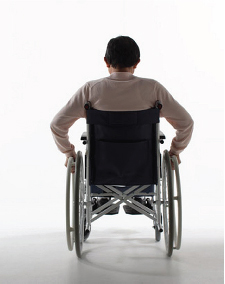
To maximize your efficiency and reduce waste, you need to know what you have, where you have it and where it needs to go. You need a system for automatically tracking equipment and people – one that does not rely on the energies of your already over-taxed clinical staff for its success. You need a system that is flexible enough to resolve your greatest pain point, but scalable enough to grow as your needs change.
For many healthcare providers, that solution is RFID.
WHAT IS RFID?
Radio frequency identification, or RFID, uses radio waves to communicate between an RFID reader and an electronic tag affixed to an object. Each tag is encoded with a unique identifier that is tied to a database. Tags can be read using handheld or mobile readers, shelf or tabletop readers, or readers that can be installed at doorways or in portal configurations.
A line of sight is not required – tags can be read automatically, even through packaging materials and in transit, whenever moving items or people come within range of a reader. RFID systems greatly streamline inventory and asset tracking, virtually eliminating human error while providing instant, detailed records of the movement of assets.
WHY RFID?
APPROPRIATE TECHNOLOGY
There is no “one size fits all” solution for tracking and managing equipment, assets and patients in a healthcare environment. The key is choosing the right technology for your application – the one that provides the information you need, as often as you need it, at a price point you can justify.
Several technologies for locating and identifying assets exist today and each has its place. As the chart below indicates, you need to evaluate options like bar codes, passive/active RFID and Wi-Fi to determine which solution sets or combinations give you the appropriate level of insight and visibility to the assets and inventory you wish to track. Typically, a technology that has higher tag costs will provide more granular location information, but might be cost prohibitive for all but the most expensive, most critical-to-track assets.
For instance, bar code systems are familiar, relatively inexpensive and easily implemented, but require a line of sight and manual scan to capture data. A Wi-Fi based Real Time Location System (RTLS) can continuously track the location of tagged items as they move around your care environment, actively “calling out” their location as often as you choose. However, not all applications require that level of detailed data collection and it is typically more expensive to implement; RTLS tags can cost 30 to 40 times what a passive RFID tag costs and RTLS systems typically require expansion of your existing wireless infrastructure.
Passive UHF RFID is a highly adaptable way to track and manage mobile assets and patients. Your solution can include any mix of handheld, mobile or fixed position readers, as your needs require. Tags suitable for virtually any type of item or for people – from tags designed specifically for metal, to small and flexible tags suitable for patient wristbands – are widely available and affordable, making it easy to implement and incrementally expand RFID systems.
UNOBTRUSIVE ACCURACY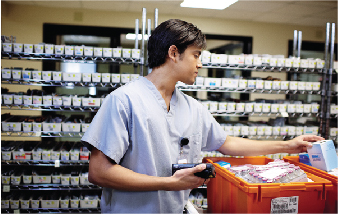
RFID brings a number of distinct advantages to healthcare asset management and inventory systems. Because RFID does not require a line of sight for data capture, data is captured as soon as a tag comes within range of a reader – usually about 5 to 10 feet depending on the environment and tag type. However, range can be adjusted and customized to your needs depending on the specific environment. Multiple assets can be captured with a single pass, drastically reducing the time required to take inventory. Successfully scanning an RFID tag does not require that equipment be moved or patients be disturbed in order to acquire a line of sight, as when using bar codes.
Because multiple tags can be read at once, even through packaging materials, RFID is an ideal tool for constantly monitoring inventory in a drug or supply cabinet. You always know precisely what is in stock and what is running low, making it possible to better manage purchasing, reduce excessive inventories and reduce delays in patient care.
With fixed readers, RFID data capture can be fully automated. Simply moving past a reader mounted in a doorway or hallway updates inventory locations – or tracks patients going to and from treatment or simply walking around the facility – without the need for human intervention or the possibility of human error. Handheld units can be used to perform inventory counting, to locate a specific item or for a process confirmation. And since RFID can read hundreds of tags per second, patient rooms, labs, procedure areas and stockrooms all can be inventoried in a fraction of the time it takes with traditional manual methods.
PRIMARY HEALTHCARE APPLICATIONS
ASSET TRACKING
PROBLEM
Patient care is delayed or interrupted while staff searches for needed equipment. High-value assets (wheel chairs, IV pumps, instruments, beds, etc.) move untracked around the facility, with no clear ability to determine asset locations. Bed and equipment turnover are essential to efficient operation and difficult to track. Equipment is sometimes hoarded or accidentally lost in linen or waste disposal areas.
VISIBILITY ACHIEVED WITH RFID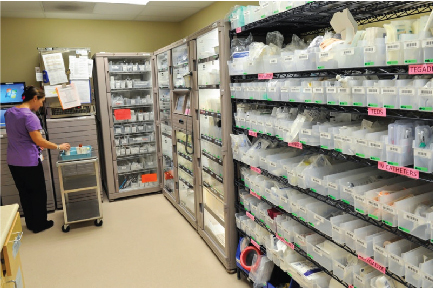
Most providers don’t need constant reporting on exact asset location, but need to know the movement and have the ability to track where the asset goes. RFID readers installed at strategic, high traffic locations detect and time-stamp the movement of tagged critical assets, allowing them to be quickly located based on their last known location. The level of location detail is selectable based on the number and location of the readers and antennas used.
BENEFITS
• Life-saving and critical care equipment can be located quickly, improving patient care and staff productivity.
• Specialty areas can count on needed equipment stocks, such as IV equipment in emergency and ambulatory care or thermometers and blood pressure cuffs in admitting areas.
• Admitting and treatment staff know when beds, wheelchairs and other equipment are available, allowing for faster patient/room turnover and improved incremental revenue.
• Less equipment is lost or misplaced, resulting in tighter asset control and lower replacement costs.
• Improved utilization and “right sizing” of equipment reduces patient care delays and capital expenditure.
• Case carts can be tracked through the surgical case lifecycle – beginning with assignment of a cart to a case, through inventory of contents, location, status, cleaning and finally, sterilization – to ensure that no critical steps are missed.
• System automated central dispatch speeds equipment requests and delivery, as well as special services.
• Data gathered assists staff in managing equipment flow processes and resource planning.
• Providers can easily monitor compliance with safety checks required by Joint Commission (JCAHO) standards, using data collected using RFID.APPLICATION
BRIEF RFID IN HEALTHCARE 5
INVENTORY CONTROL
PROBLEM
Supplies such as lab supplies, consumables and medications are often misplaced, out of stock or expired because there is no definitive system to monitor inventory changes. High usage levels and access by multiple users who do not monitor stock levels leads to inaccurate inventories and unnecessary rush orders to meet patient needs. Take a look at the pharmacy and the emergency room for daily examples of this type of problem.
VISIBILITY ACHIEVED WITH RFID
Purchasers need to know when various consumables are nearing re-order status, with minimal staff monitoring. RFID-enabled cabinets and refrigerators, as well as fixed RFID readers installed at supply room doors, provide automated, continuous monitoring of inventory levels, with alerts issued when preset minimum levels are reached. Handheld RFID readers, which provide on-the-spot reading of RFID tags, allow workers to perform quick and accurate inventories or search for specific items that could be misplaced in the supply room. RFID-enabled cabinets and refrigerators can also provide critical inventory and supply visibility.
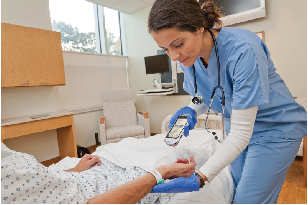 BENEFITS
BENEFITS
• Accurate inventory ensures that critical supplies are available for patients and do not need to be rush ordered at premium prices.
• With real-time inventory counts, stock held in inventory can be reduced without risking out-of-stock situations.
• Tagged supplies can be read when dispensed and automatically charged to the patient to ensure proper billing.
• Inventory and billing of lab supplies, both internal and external, can be better managed to reduce replacement costs and increase revenue.
• Automated inventory updates help reduce lost and stolen supplies, non-charged consumables and the time spent locating supplies.
• Automated expiring product stock alerts are sent to purchasers, allowing timely re-ordering.
HEALTHCARE IT ASSET MANAGEMENT
PROBLEM
IT equipment in a typical provider environment is mobile, so taking physical inventory is time-consuming. Misplaced or stolen equipment is expensive, not only because of the cost of hardware, but the attendent costs of searching and re-deploying. Lost equipment can also mean lost data; access to computing platforms that could contain financial or clinical records must be strictly controlled to comply with regulatory requirements.
VISIBILITY ACHIEVED WITH RFID
Handheld RFID readers allow quick and accurate inventories to be taken of servers, storage devices and fixed and removable media and data tapes. Handheld RFID readers also allow staff to search for a specific item such as a data tape. Fixed RFID readers installed at strategic, high traffic locations create visibility zones that enable providers to keep close tabs on the data center server inventory, identifying the last location of tagged items including laptops, workstations on wheels (WOWs) and other deployed equipment such as servers, printers and wireless access points. Portal alerts also deter expensive equipment from leaving the facility.
BENEFITS
• IT equipment is easily located for faster service and improved security.
• RFID tracks data servers and storage tapes to ensure proper security and accounting.
• An accurate asset database also makes it easier to ensure that required upgrades and security updates are consistently deployed.
• RFID-based asset management helps ensure and demonstrate compliance with HIPAA regulations regarding data security.
• Work stoppages due to missing items or missing data are effectively eliminated.
• The time needed to inventory IT assets can be reduced to hours instead of days or weeks.
PATIENT TRACKING
PROBLEM
Misidentification of patients can lead to medical errors. Important care can be delayed and valuable clinical time wasted when a patient leaves the room or floor. Vulnerable patients, such as infants or those with mental challenges, can wander away.
VISIBILITY ACHIEVED WITH RFID
RFID tagged wrist bands enable positive patient identification (PPID) for medication and treatment. With RFID-tagged wrist bands, movement of patients can also be monitored and recorded unobtrusively as they pass through RFID readers at key portals.
BENEFITS
• Ambulatory patients can be tracked as they move about the facility, enabling them to be quickly located for scheduled treatments or procedures.
• RFID enables better protection of vulnerable patients by sounding an alarm when patients leave designated areas.
• Alerts and notifications are automatically routed to first responders and personnel closest to the event.
• Patients with RFID wrist bands do not need to be jostled or moved to get a line of sight, as required with bar codes.
• Temporary ID tags for relatives and visitors verify an individual’s status and areas of access – maternity, ICU and so on.
• RFID readers at key portals automatically detect who enters or leaves a controlled area and notes their name, status and time of access.
DOCUMENT AND DATA FILE TRACKING
PROBLEM
Providers have a regulated responsibility to safeguard patient records against loss or unauthorized access. Both paper and digital records must be strictly controlled. Visitors, patients and other non-hospital personnel may have access to sensitive areas.
VISIBILITY ACHIEVED WITH RFID
Many documents and data files, including charts, physician and pharmacy orders, laboratory reports and imaging files must circulate to be useful. Fixed RFID readers deployed at key entry and exit points lets providers offer limited but secure access on an as-needed basis, while tracking access for compliance reporting purposes. And with handheld RFID readers, staff can search for a specific folder that may have been misfiled.
BENEFITS
• Clinical access is ensured without compromising patient confidentiality.
• Regulatory compliance is both documented and demonstrated.
• Data movement is tracked from the time a document or file leaves its storage area until it is returned, assisting in forensic investigations.
• Unlike many other types of identification, RFID is hard to counterfeit, ensuring greater security for sensitive information.
• Missing files can be more easily located, minimizing the staff time needed to search for documents.
OTHER RFID HEALTHCARE APPLICATIONS
•Specimen and test samples
• Medication verification
• Ambulance inventory
• Hazardous materials and waste
• Clinical trials
• Loss prevention
• Surgical instrument tracking
• Equipment and patient tracking portal solution
• Smart cabinet/smart shelf solutions for medication and high-value supply inventory control
• Operating room case/cart tracking and management
• Patient triage, transport and identification as well as family reunification during a mass evacuation
GETTING STARTED WITH RFID
Because most healthcare providers rely on the same IT staff for all their strategic projects, the thought of taking on a new initiative like RFID can be overwhelming. Here’s an approach that can help you manage competing priorities:
Assess
Determine your points of greatest pain and consider how RFID might help you address them. What do you need to change? What data do you really need (as opposed to what would be nice to know)? Does the cost/benefit potential look positive? Is RFID the right solution?
Prototype
Build out the basic concepts, relying on your RFID vendors as a resource. Put together a multidisciplinary team to consider multiple approaches and determine what might really work in your operation. Be sure ROI calculations are part of your evaluation.
Pilot
Start small, but start. Benchmark, test, refine and repeat.
Deploy
If the pilot has been successful, you should have a solid business case. Don’t delay – your ROI awaits you.
PUT YOUR MONEY WHERE YOUR MISSION IS
To you and your clinical staff, quality patient care is a mission. To your patients, it is an experience measured in time and attention – an experience that begins the moment they enter your facility and often continues long after they leave it.
RFID helps you to track the tools you use more accurately, use them more efficiently and manage them more effectively. And that gives you more time and resources to devote to the people who are counting on you.
ABOUT MOTOROLA RFID SOLUTIONS
Motorola helps businesses gain increased visibility through automation with an innovative portfolio of RFID solutions for inventory, supply chain and asset management applications. Our comprehensive offering includes a business and industrial line of fixed, handheld and mobile RFID readers that simplifies deployment, lowers costs and maximizes return on investment. A leading provider of mission-critical communication products and services, Motorola extends the value of your RFID solution with a mobility portfolio that includes wireless infrastructure, advanced data capture and mobile computing products. Through leading-edge innovation and communications technology, we are a global leader that enables our customers to be their best in the moments that matter.



